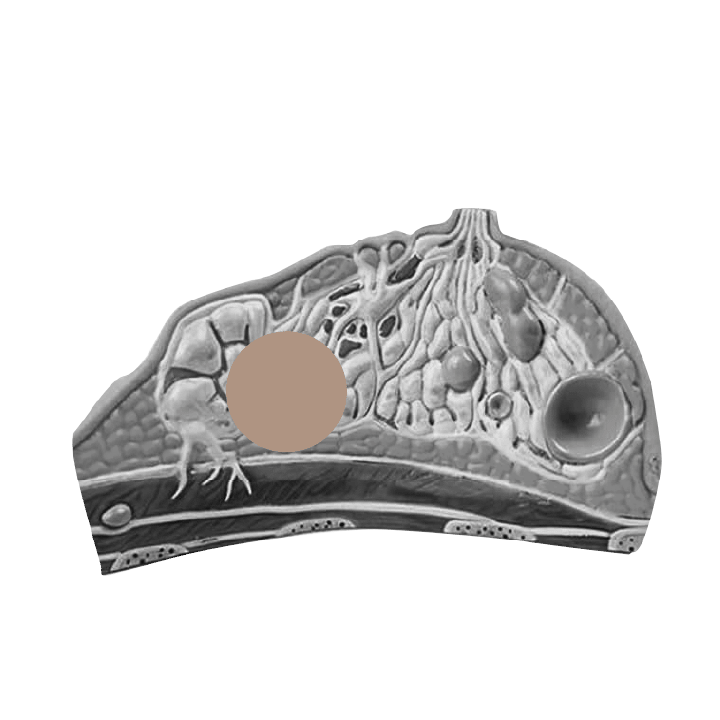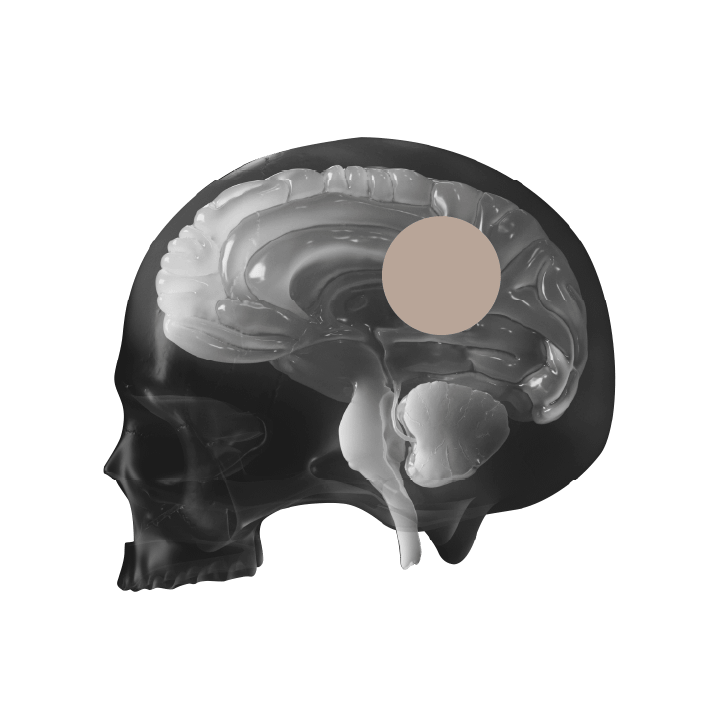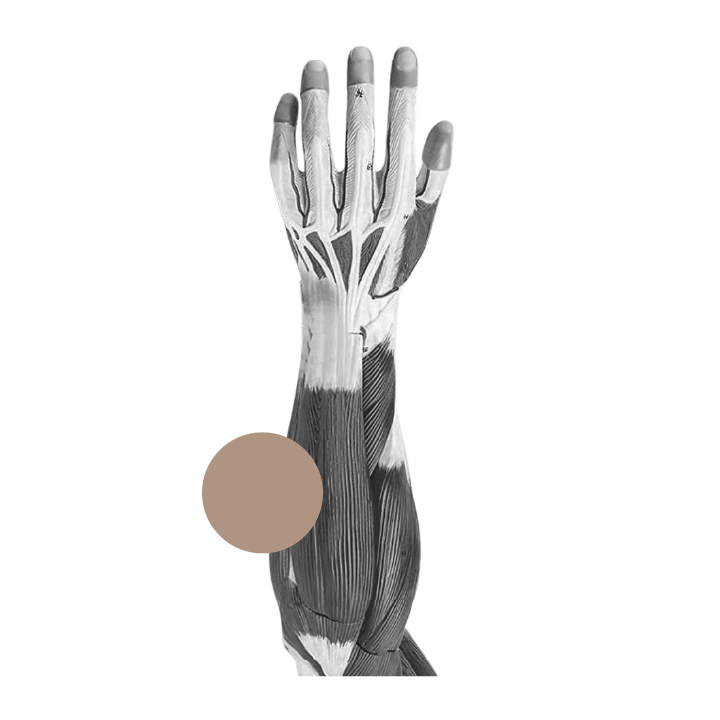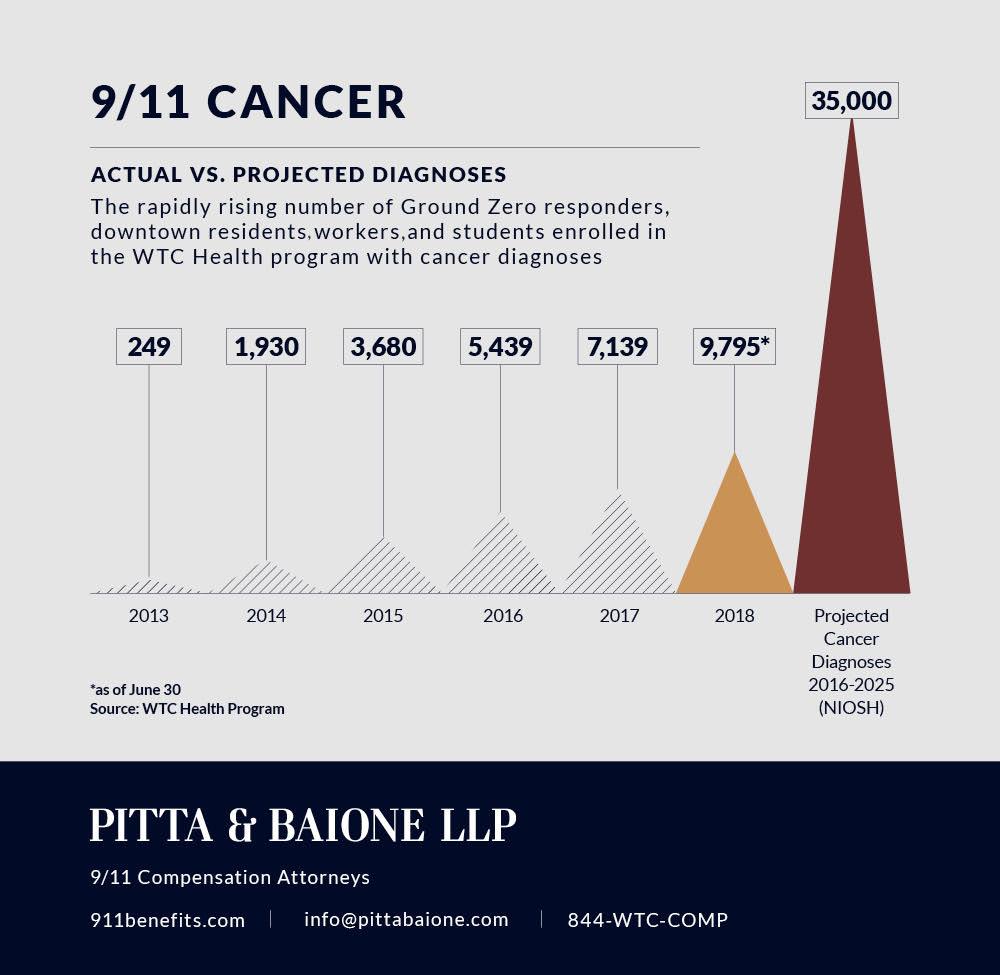Cancer is one of the most common health conditions associated with exposure to toxic dust and debris at Ground Zero after the September 11th World Trade Center attacks. But cancer is not always an immediate diagnosis. In some cases, precancerous conditions – abnormal changes in cells that may develop into cancer over time – are detected first.
Precancerous conditions can be serious, and in some cases they eventually progress to malignancy if not monitored or treated. Survivors and first responders often ask whether these conditions are covered by the World Trade Center Health Program (WTCHP) and the September 11th Victim Compensation Fund (VCF).
The answer depends on the specific condition.
How the WTCHP and VCF Work
The WTCHP provides medical monitoring and treatment for certified 9/11-related health conditions. The VCF provides financial compensation for those who suffer losses due to certified 9/11-related physical conditions.
To qualify for VCF compensation, a condition must first be certified by the WTCHP as 9/11-related. Some precancerous conditions are monitored by the WTCHP but are not certifiable, and therefore do not qualify for VCF compensation. Others, like Endometrial Intraepithelial Neoplasia (EIN), have recently been recognized and are treated similarly to cancers.
Monoclonal Gammopathy of Undetermined Significance (MGUS)
MGUS is a premalignant plasma cell disorder that increases the risk of multiple myeloma and other serious blood cancers.
- WTCHP coverage: The WTCHP allows for diagnostic testing and ongoing monitoring of MGUS when clinically indicated. Coverage is typically approved for up to three years at a time and must be reauthorized if continued.
- Certification: MGUS cannot be certified as a WTC-related health condition.
- VCF compensation: Because it is not certifiable, MGUS does not qualify for compensation from the VCF.
Endometrial Intraepithelial Neoplasia (EIN)
EIN is a precancerous condition of the uterine lining that carries a high risk of progression to endometrial cancer.
- WTCHP coverage: As of January 18, 2023, both endometrial cancer and EIN are recognized WTC-related health conditions. EIN can be certified if properly documented and if latency requirements are met.
- Certification: EIN is certifiable. Pathology confirmation is required.
- VCF compensation: Because EIN is certifiable, individuals with this diagnosis may be eligible for VCF compensation, similar to those with an invasive cancer diagnosis.
Precancerous Skin Lesions
Many survivors ask whether precancerous skin lesions such as actinic keratosis or atypical moles (dysplastic nevi) are covered.
- WTCHP coverage: Only malignant skin cancers, including melanoma and non-melanoma skin cancers like basal cell carcinoma and squamous cell carcinoma, are covered. Precancerous lesions are not covered.
- Certification: Not certifiable.
- VCF compensation: Not compensable. Compensation is available only if a precancerous lesion progresses into a malignant cancer recognized by the WTCHP.
Other Non-Certifiable Precancerous Conditions
The WTCHP explicitly excludes certain precancerous or in situ conditions from certification, including:
- Cervical intraepithelial neoplasia (CIN I, II, III)
- Carcinoma in situ of the cervix
- Colon and rectum carcinoma in situ
- Lobular carcinoma in situ of the breast (except pleomorphic LCIS)
- Gallbladder carcinoma in situ
These conditions may be monitored for clinical reasons but are not certifiable and therefore not compensable by the VCF.
Key Takeaways
- Monoclonal gammopathy of undetermined significance (MGUS) is monitored under the program, but it is not certifiable and not compensable.
- Extramedullary plasmacytoma (EIN) is certifiable, covered by the World Trade Center Health Program (WTCHP), and compensable through the Victim Compensation Fund (VCF).
- Precancerous skin lesions are not covered unless they progress to malignant skin cancer.
- Other precancerous lesions, such as cervical intraepithelial neoplasia (CIN), colorectal carcinoma in situ, and lobular carcinoma in situ, are not certifiable and not compensable.
Precancerous Conditions from 9/11 FAQ
How Likely Am I to Get Cancer if I Have Been Diagnosed with EIN?
While EIN is considered a precancerous condition, women who have been diagnosed with EIN are 45 times more likely to develop endometrial cancer, according to some studies.
How Many People Got Cancer from 9/11?
As of now, there are more than 24,000 cases of 9/11-related cancer, and this number is expected to continue to rise as more awareness spreads. The types of cancer associated with survivors and first responders of 9/11 – prostate cancer, leukemia, and thyroid cancer – are 19%, 41%, and 81% higher than the general population.
What Is Ground Zero Cancer?
Ground Zero cancer refers to the various types of cancers that have developed among 9/11 survivors and first responders due to prolonged exposure to toxic dust and hazardous materials released during the collapse of the Twin Towers.
Could My Pre-Existing Condition Be Covered by the WTCHP?
Many cancer and precancerous conditions are covered by the WTC Health Program. To qualify for support, a victim’s condition must be related to the attacks or to the aftermath following the attacks. Pre-existing conditions may not be covered if a person was suffering from that condition prior to the attacks, but you may be entitled to benefits if exposure caused your pre-existing condition to worsen.
How the Zadroga Act Helps 9/11 Survivors
The Zadroga Act is a government program established to provide healthcare services and financial compensation to individuals suffering from medical conditions related to the events of 9/11. In passing the Zadroga Act, the government established two key programs: the World Trade Center Health Program and the September 11th Victim Compensation Fund (VCF). The WTC Health Program offers medical monitoring and treatment for health conditions related to 9/11 exposure, including respiratory illnesses, cancers, and mental health disorders, while the VCF compensates individuals for their lost income, medical expenses, and pain and suffering.
Those who were present at the exposure zone for up to ten months following the attacks may qualify for these critical benefits. Contact our firm today to discuss your case.
Conditions Covered by the WTCHP Under the Zadroga Act
The World Trade Center Health Program (WTCHP) provides coverage for a wide range of medical and mental health conditions for eligible participants. Here are a few of the more common conditions the WTCHP covers:
- Respiratory and Lung Conditions: These include chronic respiratory diseases such as asthma, chronic bronchitis, and pulmonary fibrosis that result from prolonged exposure to dust and debris.
- Cancers: A broad spectrum of cancers is covered, including lung, thyroid, and prostate cancers, as well as rare cancers like mesothelioma, which are linked to toxic substances released following the attack.
- Mental Health Disorders: Mental health issues, including post-traumatic stress disorder (PTSD), depression, and anxiety, are covered by the WTCHP.
- Gastrointestinal Conditions: Acid reflux, or gastroesophageal reflux disease (GERD) are common among survivors due to both stress and the airborne toxins they ingested on 9/11 that can affect the digestive system.
- Musculoskeletal Disorders: First responders in particular have reported musculoskeletal conditions such as lower back pain and carpal tunnel syndrome sustained during their rescue and recovery efforts.
If you believe you are suffering from a condition related to the September 11th attacks but not listed here, you may still be eligible for benefits under the Zardoga Act. Contact Pitta & Baione LLP for more information.
Talk to a Lawyer About Your 9/11 Precancerous Condition Claim
Our firm has successfully recovered millions of dollars in damages for our clients because we understand the challenges they face on a personal level. Our firm is located mere blocks away from Ground Zero, and even before programs like the Victims Compensation Fund and the World Trade Center Health Program existed, our lawyers were lobbying Congress to establish 9/11 benefits programs for our clients.
Whether you have a quick question about enrolling to receive healthcare benefits or are looking for legal representation, we encourage you to contact Pitta & Baione LLP for a free consultation.
PITTA & BAIONE LLP SUCCESSFUL CLAIMS








